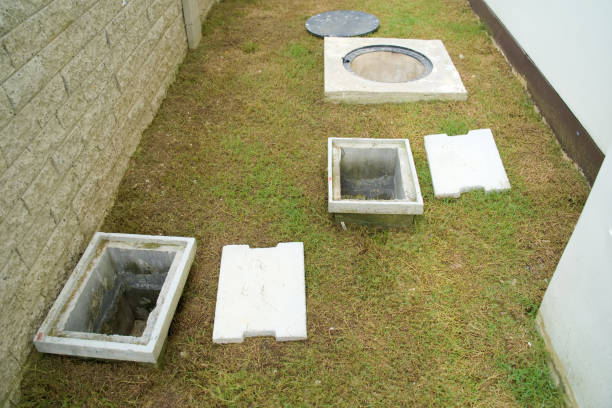Choosing the right septic system design for your property is a crucial decision that impacts both the functionality and longevity of your wastewater treatment system. Whether you are building a new home or upgrading an existing system, selecting the appropriate septic tank design depends on various factors like soil type, property layout, and local regulations. Understanding these elements will help you make an informed choice, ensuring your septic system operates efficiently and remains environmentally friendly. This article will guide you through the essential steps to choose the right septic system for your property.
What Is a Septic System?
A septic system is an underground wastewater treatment solution commonly used in rural or unincorporated areas without access to centralized sewage systems. It consists of two main components: the septic tank and the drain field. Wastewater from your home flows into the septic tank, where solids settle and liquid waste is sent to the drain field for further treatment. The effectiveness of this process heavily relies on the right design and proper installation.
Key Factors to Consider When Choosing a Septic System Design
1. Soil Quality and Percolation Rate
The first step in selecting the right septic system design is to assess the quality of the soil on your property. The soil type influences how well it can absorb and treat the wastewater. A percolation test (also called a “perc test”) is often required to measure how quickly water drains through the soil. This test will help determine the type of septic system best suited for your land.
- Sandy soil: Offers excellent drainage and is ideal for most conventional systems.
- Clay soil: Has poor drainage and may require an alternative septic system design.
- Silt and loam: Provide moderate drainage and can support a variety of septic systems.
2. Property Size and Terrain
The layout and size of your property play a significant role in the design of your septic system. Conventional septic systems require a large area for the drain field to properly treat wastewater. If your property is small or has uneven terrain, you may need a specialized system designed for space efficiency or difficult landscapes.
3. Local Environmental Regulations
Before deciding on a septic tank design, it’s essential to consult local health departments and regulatory agencies to understand any restrictions or requirements in your area. Different regions have specific guidelines concerning the installation, size, and distance of septic systems from homes, water bodies, and wells. Ignoring these regulations can result in hefty fines or even system removal, so always stay informed.
4. Household Size and Water Usage
Your family’s water usage directly impacts the size and design of your septic system. A larger household that uses more water will require a bigger septic tank and a larger drain field. As a general rule, the more people in the household, the larger the system needed to handle the wastewater flow. Additionally, if you use appliances like washing machines or dishwashers frequently, this will increase the load on the system.
5. Groundwater Levels
High groundwater levels can affect the efficiency of your drain field and increase the risk of system failure. In such cases, you may need an alternative septic system design, such as a raised or mound system, which is designed to keep wastewater above the groundwater table.
Types of Septic System Designs
1. Conventional Septic System
A conventional septic system is the most widely used design for properties with suitable soil and ample space. This system consists of a septic tank and a drain field. Wastewater flows from the tank into perforated pipes buried in trenches, where it gradually filters through the soil for natural treatment. The size of the tank and the drain field depends on the size of your home and the amount of wastewater generated.
Best for: Properties with sandy or loamy soil and enough space for the drain field.
2. Mound Septic System
A mound system is an alternative design used when the soil is too shallow or there’s a high water table. The system raises the drain field above ground level by building a mound of sand and gravel. Wastewater is pumped to the top of the mound, where it filters through the sand and gravel before reaching the natural soil.
Best for: Areas with high groundwater or properties with shallow soil.
3. Aerobic Septic System
An aerobic septic system treats wastewater with oxygen, breaking down organic matter more efficiently than traditional systems. This type of system is ideal for properties with poor soil conditions or small lots. However, aerobic systems are more complex and require more maintenance, including regular inspections and repairs.
Best for: Properties with poor drainage or limited space.
4. Chamber System
A chamber septic system uses a series of interconnected chambers instead of perforated pipes. These chambers store and treat wastewater as it seeps into the surrounding soil. This design allows for more efficient water absorption and is particularly useful in areas with variable soil quality.
Best for: Properties with variable soil conditions or areas with water conservation concerns.
5. Drip Distribution System
A drip distribution system uses small, flexible pipes to slowly distribute treated wastewater just below the soil’s surface. Unlike conventional systems that require large drain fields, this design can be installed in shallower soil and uneven terrain. It is highly customizable, making it a good option for challenging landscapes.
Best for: Properties with uneven terrain or shallow soils.
Septic Tank Design Options
Once you’ve chosen the right system, it’s time to focus on selecting the appropriate septic tank design. The size of your septic tank will depend on the number of people in your home, the amount of water used, and the design of your system.
1. Concrete Septic Tanks
Concrete tanks are durable and long-lasting, making them a popular choice for septic systems. They are heavy, which makes them resistant to floating if the water table is high. However, they can crack over time, especially if not installed properly.
2. Plastic Septic Tanks
Plastic tanks are lightweight and easy to install. They are also resistant to rust and corrosion, making them a good option for areas with highly acidic soil. The downside is that they can be prone to shifting in areas with high water tables.
3. Fiberglass Septic Tanks
Fiberglass tanks are similar to plastic tanks but are typically more durable and resistant to cracking. They are lightweight, easy to install, and resistant to chemical damage. These tanks are ideal for areas with high water tables and harsh environmental conditions.
Maintenance Tips for Your Septic System
No matter which septic system design you choose, regular maintenance is crucial to keep your system running smoothly. Proper care can prevent costly repairs and extend the lifespan of your septic system.
- Regular Pumping: Your septic tank should be pumped every 3 to 5 years, depending on the size of your household.
- Avoid Flushing Non-Biodegradable Items: Items like wipes, sanitary products, and chemicals can disrupt the bacterial balance in the tank.
- Conserve Water: Reducing water usage lowers the load on your system and extends its life.
- Schedule Inspections: Have a professional inspect your system regularly to ensure everything is functioning properly.
Conclusion
Selecting the right septic system design for your property is a critical decision that depends on factors like soil type, property size, water usage, and environmental regulations. By considering these factors and exploring different septic tank designs, you can choose a system that meets your needs and functions effectively for years. A well-maintained septic system ensures long-term reliability and minimizes the risk of costly repairs. Take the time to evaluate your property and consult professionals to make an informed decision for your home’s wastewater management.


